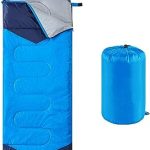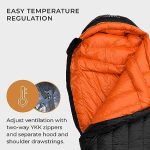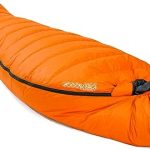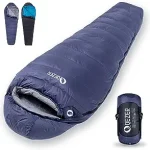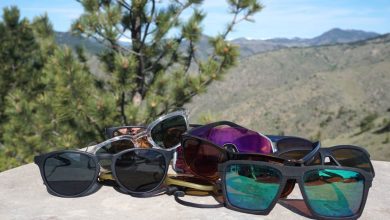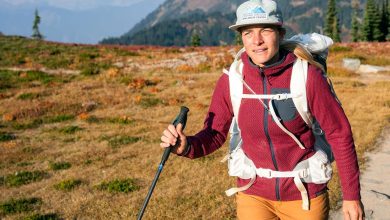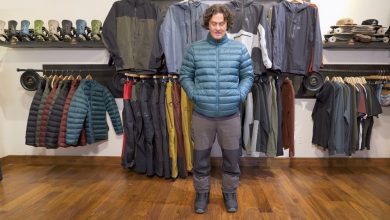Best Sleeping Bags For Hiking And Trekking

A sleeping bag is a must-have, especially during trekking, hiking, or other camping activities. They help us spend a night in an unknown place, mostly outdoors, in a warm, comfortable, and protective way. So, investing in the best sleeping bags becomes important, especially while putting ourselves in a vulnerable position while sleeping.
Do you remember the uncomfortable sleeping bags and the coldness they brought?
To avoid repeating the same mistakes, we are here to provide a comprehensive article about sleeping bags. You see, a good sleeping bag will be comfortable, provide warmth during winter, and keep you cool during summer.
So, go through this article to learn all about sleeping bags to make your next camping the best one and continue doing so.
There are Five Types of Sleeping Bags.
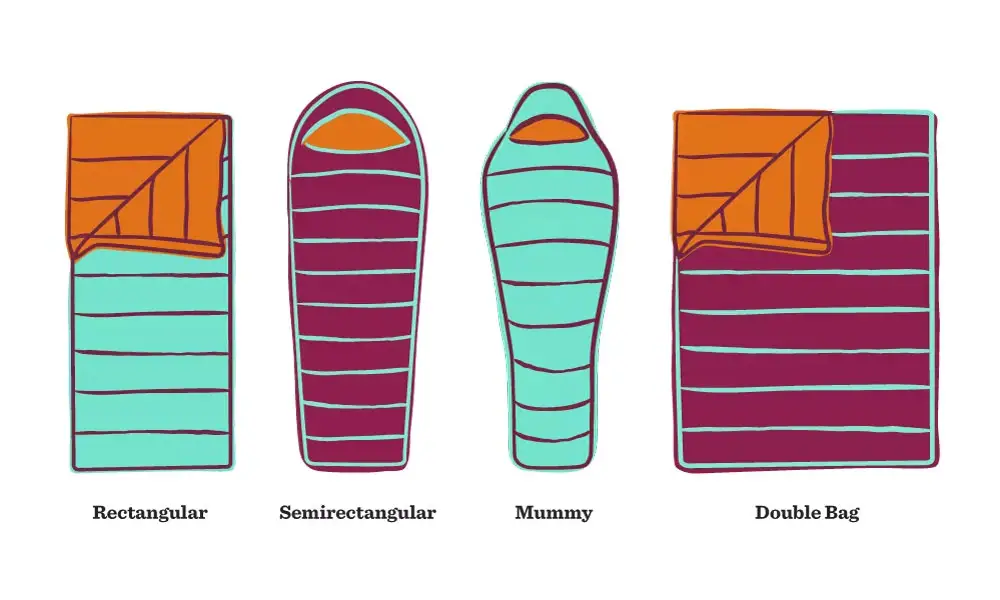
Whenever we talk about sleeping bags, we need to talk about the five types that are also widely popular. These five types contain all the different types of sleeping bags that are suitable for any type of camping.
The Mummy Shaped Sleeping Bags
Whenever we talk about tapered sleeping bags that hug your body around your head and feet, we talk about mummy-shaped sleeping bags. They also have a narrower shape specially designed to keep the warmth inside the sleeping bag. In addition, they are exceptionally lightweight with warmth, perfect for mountaineering and backpacking.
The Rectangle Shaped Sleeping Bags
Traditional sleeping bags, aka the rectangle-shaped bags, have a straight cut and a rectangular shape. Family and car campers widely use these sleeping bags because they are spacious and versatile.
The Backpackers Sleeping Bag
Backpackers worldwide use backpackers’ sleeping bags for their compatibility and lightweight structure. These sleeping bags are made from synthetic materials and also have down insulation. Additionally, these sleeping bags boast a streamlined design to reduce their bulk and weight.
The Kids Sleeping Bag
Children require a special sleeping bag to adhere to their shape and size. Often kids’ sleeping bags are more colorful and contain printed cartoon characters. Some kids’ sleeping bags may contain pockets and built-in pillows too.
The Double Sleeping Bag
As the name suggests, the double sleeping bag is for two people. Thus it is larger in shape than other sleeping bags mentioned above. These often have a rectangular shape since it is the largest type of sleeping bag. Furthermore, the double sleeping bags have two different compartments to sleep in.
However, it has a single zipper to zip the sleeping bags completely so that two people can sleep together snugly inside it.
5 Best Sleeping Bags
What is the best weight to warmth sleeping bag?

Temperature rating is a technical term used to describe a sleeping bag’s weight-to-warmth ratio. These temperature ratings are accepted by International Standard ISO 23537. There are three main temperature ratings of sleeping bags T Limit, T Extreme, and T Comfort.
So, whenever you buy a sleeping bag, look at the temperature rating of the particular sleeping bag, which we will describe further on.
T Limit – Temperature Rating
The T Limit temperature rating falls in the lower range of the transition range. This particular sleeping bag is based on the lowest temperature a standard adult male can easily and comfortably sleep in. The condition in which the standard adult male is sleeping is by wearing a single layer of base clothes and in a curled-up position. Further, the curled position is for keeping warmth inside the sleeping bag.
T Extreme – Temperature Rating
Unlike the T Limit temperature, which falls at the lower range of the transition range, the T Extreme falls on the lower limit of the risk range. A sleeping bag with a temperature rating of T Extreme is based on a standard adult woman’s survival-only sleeping conditions. Additionally, this sleeping bag should only be used in general conditions or conditions where survival throughout the sleeping time is required.
T Comfort – Temperature Rating
The T Limit sleeping bag is based on the condition a standard adult woman falls asleep comfortably. The woman is wearing only a base layer and is extremely comfortable sleeping snugly inside the sleeping bag.
So, while choosing the sleeping bag, you might need to choose according to the weather and temperature of the place you will be sleeping in. Most people often choose the T Comfort temperature rating sleeping bag. Also, it is important to understand that warming up inside a sleeping bag is harder than cooling down.
Therefore, while choosing the temperature rating of a sleeping bag, look for the temperature rating to be colder than the place’s coldest recorded temperature.
What do you put under a sleeping bag?
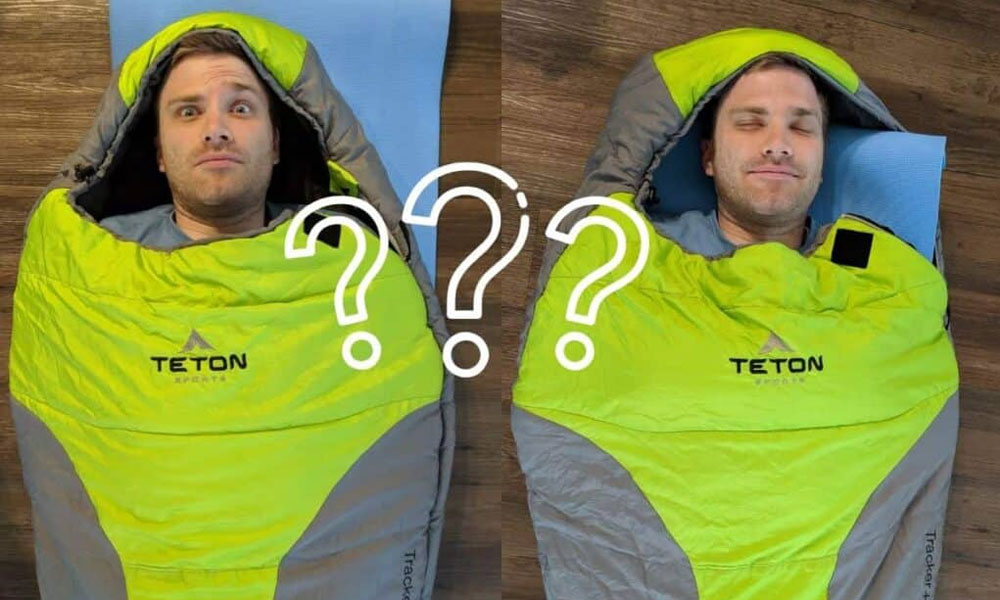
Sleeping bags sometimes alone don’t fulfill the warmth and comfort one might need during camping. So, adding something extra under the sleeping bags can add to the warmth, comfort, and protection from rainwater seeping inside the sleeping bag. You can put many things under sleeping bags, but here are our best, which are tried and tested.
The Emergency Blanket
Did you know that layering an emergency blanket underneath your sleeping bag under it will reflect the warmth of your direction? All the good-quality emergency blankets in the market are impermeable; hence no unnecessary moisture can seep inside your sleeping bag while you comfortably inside it.
The Extra Sleeping Pad
Putting a self-inflatable or inflated extra sleeping pad under your sleeping bag will help increase its insulation and comfort level. If you are camping in an extremely cold place, this trick allows your sleeping bag to reach the maximum level of warmth for an amazing sleep.
A Closed Cell Foam Pad
A closed-cell foam pad under your sleeping bag will increase the insulation capacity of your sleeping bag. Thus it will help you keep warm all night.
A Tarp
If ground moisture is your number one while using a sleeping bag, then putting a tarp under it will prevent the moisture from seeping inside your sleeping bag. Also, if cowboy camping is your jam, a tarp will be your best friend. Use a tarp underneath your sleeping bag whenever you go on long hikes in arid places like deserts.
A Rubber Mesh Sheet
Sleeping bags tend to move at night while sleeping because humans do not sleep still and are constantly moving throughout the night.
So, if your main concern is staying put throughout the night, consider putting a rubber mesh under your sleeping bag next time you go camping. Also, a rubber mesh sheet will completely insulate you by preventing moisture from entering your sleeping bag.
An External Blanket
Using an external blanket under your sleeping bag will increase the comfort level of your sleeping bag. These are fluffy little things that will keep your toes warm and also wick moisture.
A Leaf
Okay, not a single leaf, but leaves can work great under sleeping bags if you forget to carry an external layer to put under your sleeping bag. A layer of abundant leaves can increase your sleeping bag’s comfort and insulation level.
What is a season 3 sleeping bag?
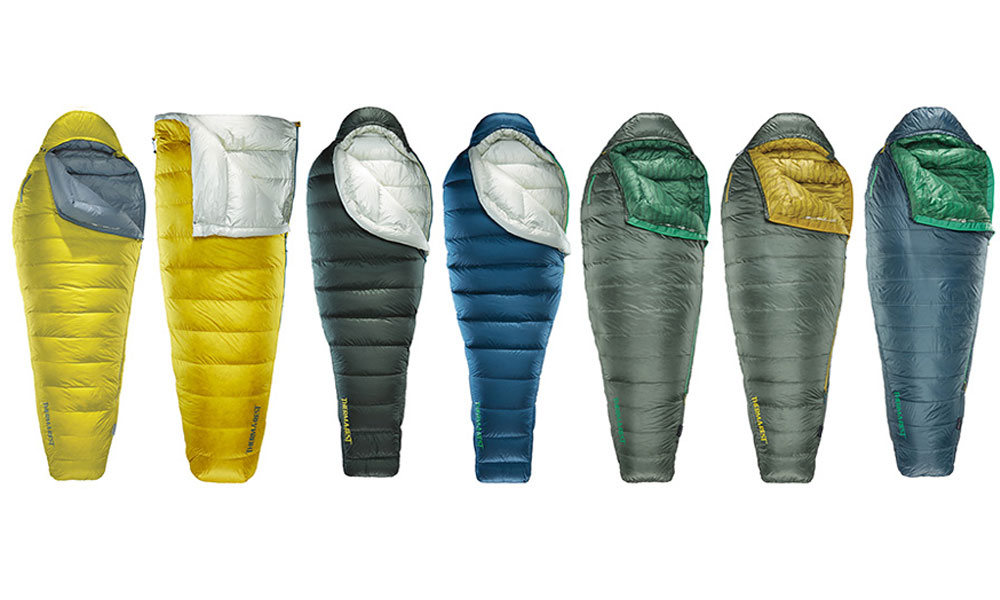
There are mainly five types of seasons for a sleeping bag. These classifications are informal, but they can be used to determine the various types of sleeping bags suitable for a particular environment.
Season 1
If your camping site’s sleeping time has a temperature of more than 5°C, then use the season 1 sleeping bags.
Season 2
Spring and summer nights are what a season 2 sleeping bag must be used for. If nights have temperatures ranging from 0°C to 5°C, then the season 2 sleeping bags would be appropriate.
Season 3
Season 3 sleeping bags are used by campers worldwide as a standard season grade. These sleeping bags can be used for a cold night, ranging from -5°C to 0°C. However, the night should most preferably be frostless.
Season 4
When the night is a little snowy, and the temperature ranges from -10°C to -5°C, a season 4 sleeping bag is a wise choice.
Season 5
The season 5 sleeping bags are also called 4 Season Mountain. These are mainly used for mountain expeditions and can be used over heavy snow. The temperature that season 5 sleeping bags can tolerate ranges from -40°C to -10°C.
How heavy should my sleeping bag be?
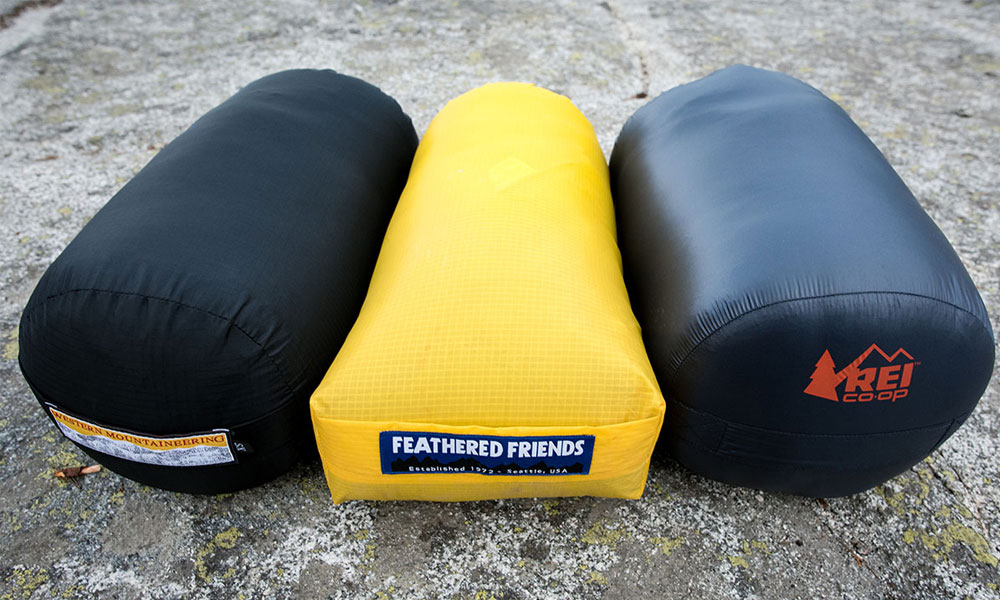
Sleeping bags are the heaviest trekking and hiking equipment that you will carry. So, understanding how heavy a sleeping bag should weigh and which weight is too much is important.
The weight of a sleeping bag depends upon four main factors. The amount of money you spend on a sleeping bag is number one because the more you spend, the lighter your sleeping bag will be. Expensive sleeping bags are made of materials that are warmer but lightweight.
If you want to invest in a bulky sleeping bag because you think it will be more comfortable, that can add to the weight of the sleeping bag. Also, your body size and weight are important in determining how heavy a sleeping bag should weigh. If you are an adult man of a taller height, your sleeping bag will weigh more than a child’s.
Finally, the weight of a sleeping bag also depends upon your willingness to carry a sleeping bag during your camping. If you want to carry a lighter one, you can do so easily but put warmth and comfort in your mind.
The standard weight of an adult sleeping bag, season 3, will probably weigh anywhere from 3 to 4 pounds.
How long do sleeping bags last?
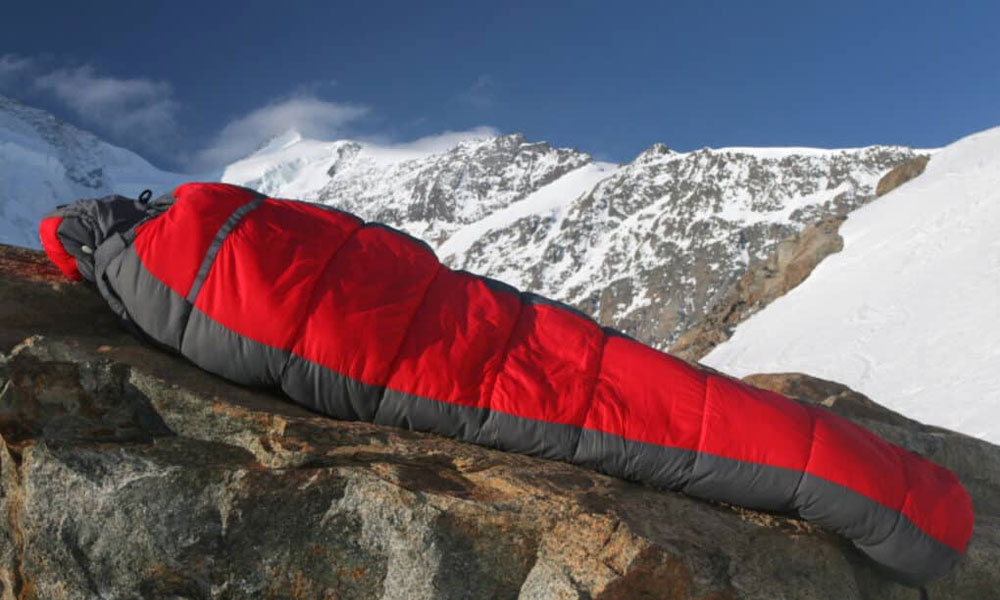
Usually, good quality sleep, if you take care of it properly, lasts 30 to 40 years.
So, while purchasing a sleeping bag, make sure it is made of premium materials because they can last up to 40 years. Investing a substantial amount of money beforehand while buying a sleeping bag is a good idea because it will reduce the cost of repurchasing a sleeping bag repeatedly.
The next factor in determining the longevity of a sleeping bag is how you take care of the sleeping bag. Ensure always to keep your sleeping bag in good condition, and being careful while using it adds to the lifespan of your sleeping bag. This sometimes may also mean that you need to only invest once or twice in a sleeping bag your entire life.
Also, doing extra things like investing in a good liner, keeping yourself and your sleeping bag clean before and after using it, using the zipper correctly, avoiding any condition that may cause your sleeping bag to become damp, and learning to repair your sleeping bags will make sure your sleeping bags last a decade.
Are hooded sleeping bags better?
Keeping your head warm, especially when sleeping in a cold place, can be tough. So, investing in a sleeping bag that has a good and sturdy hood is justified. While the necessity of a hood is not always important, two factors come into play when determining whether you need a hood or not and are hooded sleeping bags better.
If you are camping in an extremely cold area with high levels of wind, a hooded sleeping bag is important to keep yourself warm and insulated from the head to the feet. Similarly, if you like to be very warm while sleeping, investing in a sleeping bag with a snug fitting sleeping bag is a wise idea.
Is sleeping with clothes on or off in a sleeping bag better?
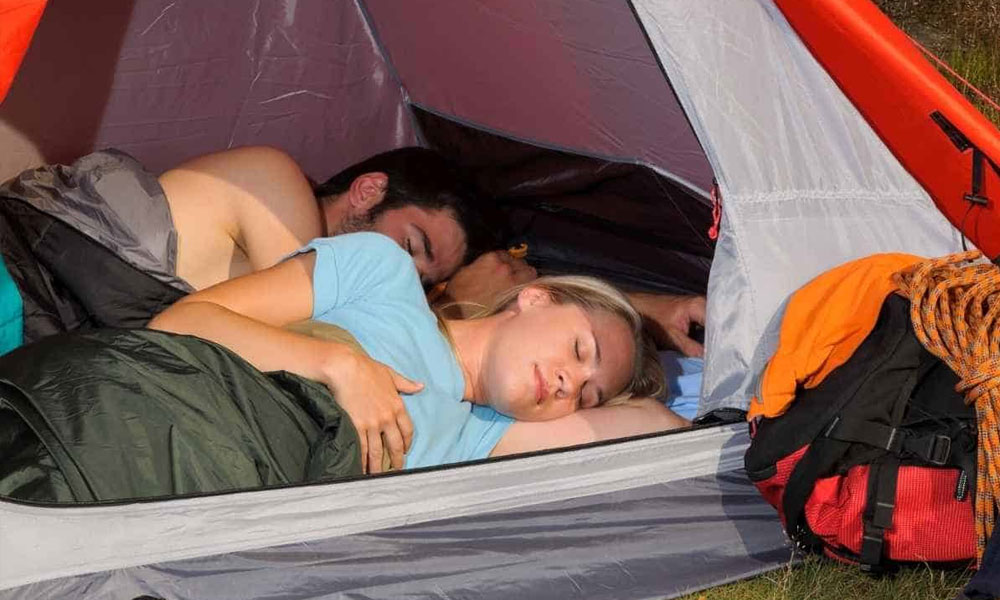
The age-old debate of sleeping with your clothes on or off in a sleeping bag can be resolved by looking into various scenarios.
Let us say that you got completely wet somewhere during your adventure and don’t have any extra clothes to spare. So, keeping your clothes off makes sense to keep the good quality of your sleeping bag and also to make yourself warm while sleeping. Only during this scenario, you must sleep with no clothes inside a sleeping bag.
However, in every scenario wearing clothes while sleeping inside your sleeping bag is probably a good idea. But remember to wear only the appropriate amount of clothes.
For example, you don’t want to be sweating and uncomfortable inside your sleeping bag and not sleep. Rather wear only basic layers while sleeping. The temperature rating of sleeping bags is also based on standard human wearing only basic layers.
So, wear a basic layer of clothing inside a sleeping bag. Additionally, you can always layer up more if the sleeping area’s temperature drops to minus.
How do you know a good sleeping bag?
A good sleeping bag will tick all the boxes we have mentioned below.
- The size of the sleeping bag is according to the size of the user.
- The sleeping bag is comfortable based on your body dimensions and temperature rating.
- The sleeping bag provides warmth according to the surroundings you are sleeping in.
- The packed size of your sleeping bag is according to the size of your trekking backpack.
- The cost of your sleeping bag is in your budget.
So, this is all you need to know about before you purchase your next best sleeping bags.
Happy Adventure!
